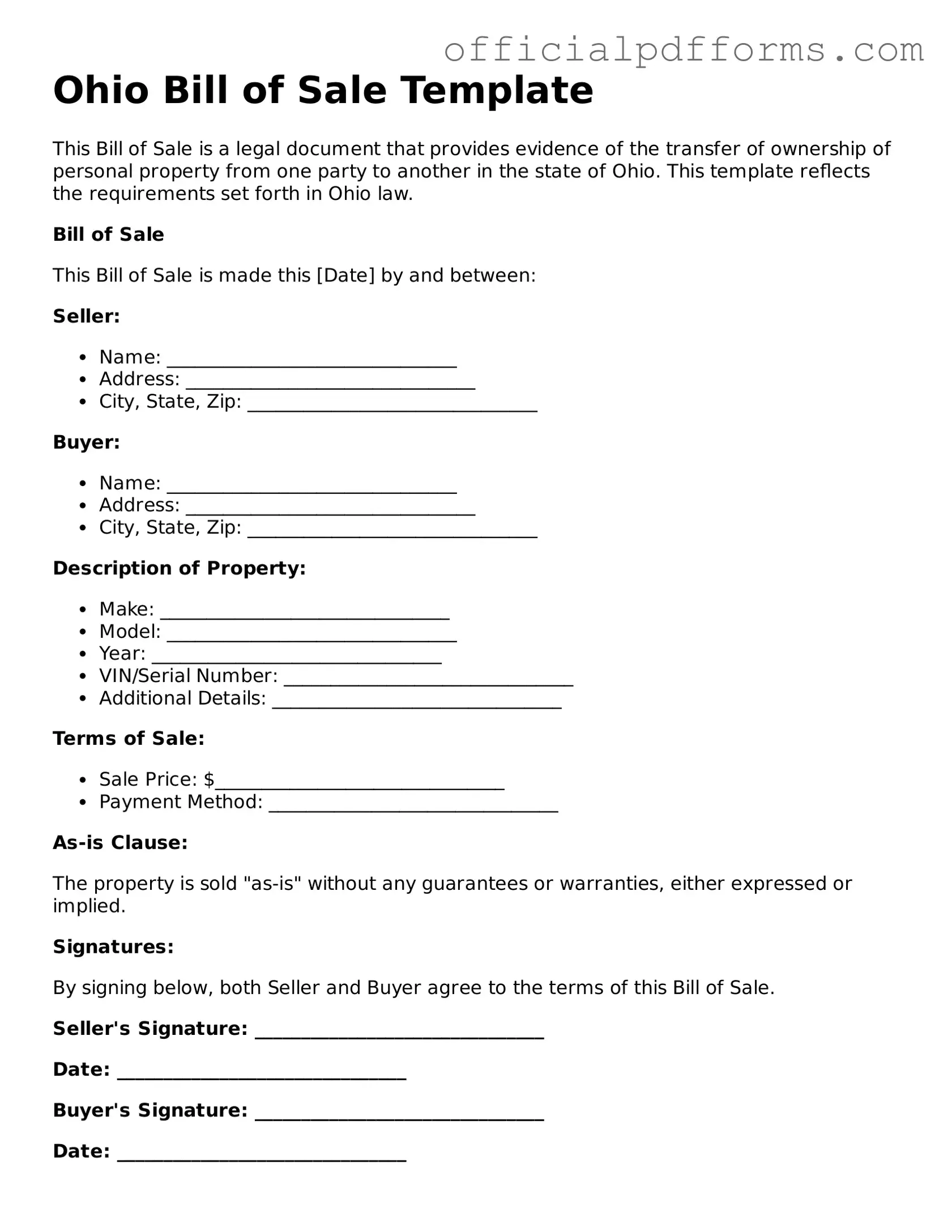What is a Bill of Sale in Ohio?
A Bill of Sale in Ohio is a legal document that serves as a receipt for the sale of personal property. It outlines the transaction details between the buyer and seller, including the description of the item, the purchase price, and the date of the sale. This document is important for both parties as it provides proof of ownership transfer and can be used for registration purposes.
When do I need a Bill of Sale?
A Bill of Sale is typically needed when selling or buying items such as vehicles, boats, trailers, or other valuable personal property. It is especially important for items that require registration or title transfer. Even for smaller transactions, having a Bill of Sale can help protect both the buyer and seller in case of disputes.
Essential information to include in an Ohio Bill of Sale consists of:
-
The full names and addresses of both the buyer and seller
-
A detailed description of the item being sold, including make, model, year, and VIN (for vehicles)
-
The purchase price
-
The date of the transaction
-
Signatures of both parties
Including this information helps ensure clarity and legality in the transaction.
Is a Bill of Sale required to register a vehicle in Ohio?
Yes, a Bill of Sale is often required to register a vehicle in Ohio. When you purchase a vehicle, the Bill of Sale serves as proof of ownership and is needed when applying for a title transfer. The Ohio Bureau of Motor Vehicles (BMV) may require this document along with other paperwork to complete the registration process.
You can create your own Bill of Sale in Ohio. However, it is important to ensure that it includes all necessary information and meets legal requirements. Many people opt to use a template or form to ensure that they do not miss any critical details. Various resources are available online to help you find a suitable template.
What happens if I lose my Bill of Sale?
If you lose your Bill of Sale, it may complicate matters, especially if you need to prove ownership of the item later. If you have a copy of the document, that can be helpful. In cases where the original is lost, consider reaching out to the other party involved in the transaction to obtain a duplicate. Keeping a copy in a safe place can help prevent issues in the future.
